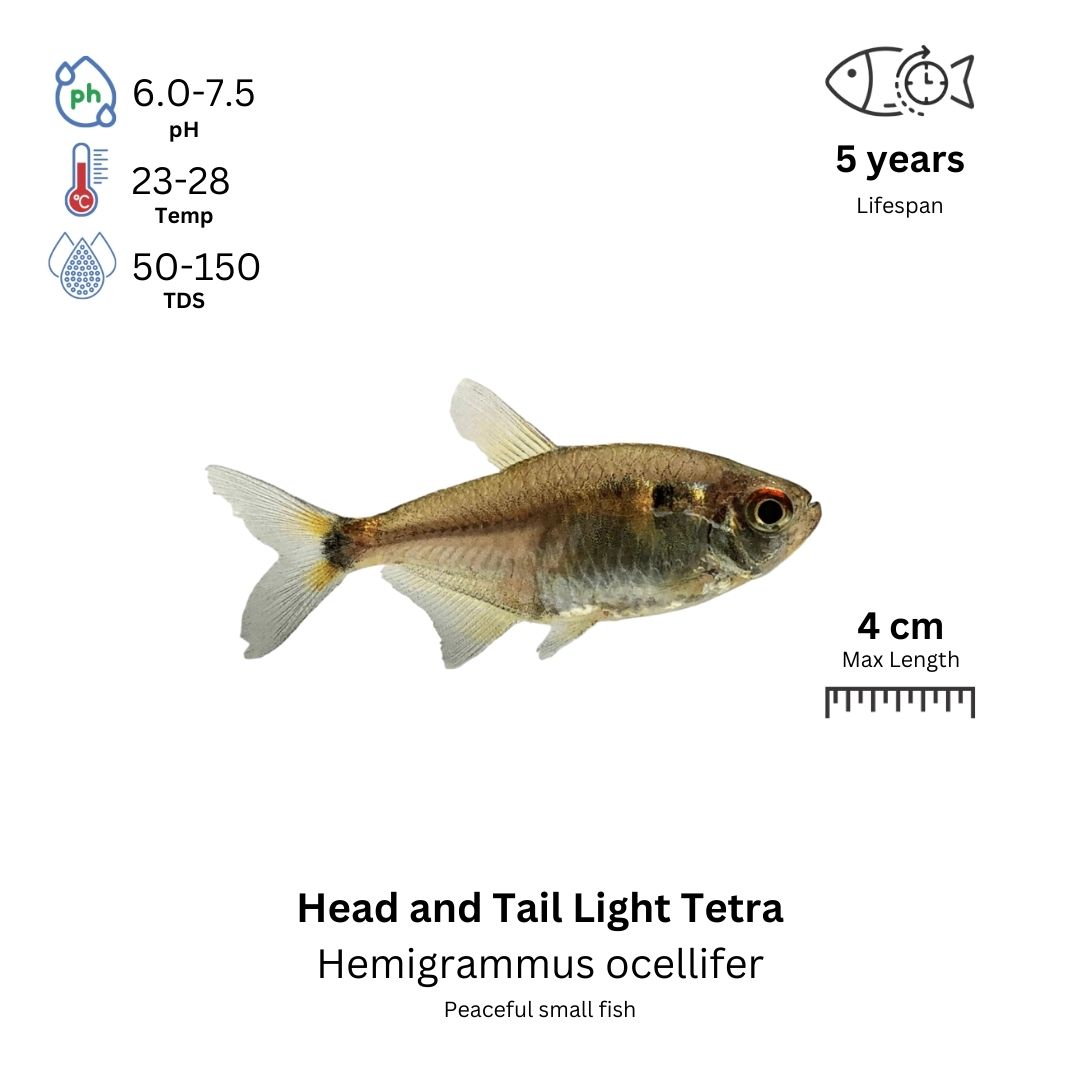Head and Tail Light Tetra (Hemigrammus ocellifer) Aquarium Profile
Characteristics
The Head and Tail Light Tetra (Hemigrammus ocellifer) is a captivating species belonging to the Characidae family. Known for its peaceful demeanor and shimmering appearance, this tetra originates from the warm, slow-moving waters of South America. It thrives in aquariums that mimic its natural habitat with subdued lighting, plenty of plant cover, and soft, slightly acidic water. Ideal water parameters for this species include:
- pH: 6.0–7.5
- Hardness: 2–15 dGH
- Temperature: 24–28°C (75–82°F)
This tetra is relatively easy to care for, making it a favorite among beginners and experienced aquarists alike.
Origin and Distribution
Native to South America, the Head and Tail Light Tetra is predominantly found in the Amazon basin, as well as in rivers and streams in Guyana, Suriname, and Brazil. Its natural habitat is marked by calm waters with abundant vegetation, where it seeks shelter and forages for food.
Colors and Markings
The Head and Tail Light Tetra is aptly named for the distinct iridescent spots near its head and tail, which resemble glowing lights. Its body displays a translucent silver hue with a subtle golden sheen. A horizontal black stripe runs along the midline of its body, adding contrast to its elegant appearance. These features, combined with its red upper eye marking, make it a stunning addition to any aquarium.
Tankmates
Peaceful and sociable, this tetra is a schooling fish that thrives in groups of at least six. It pairs well with other small, non-aggressive species such as:
- Neon Tetras
- Harlequin Rasboras
- Corydoras Catfish
- Dwarf Gouramis
Avoid housing them with larger, aggressive fish to ensure a stress-free environment.
Care Requirements
To maintain a healthy environment for the Head and Tail Light Tetra:
- Use a well-filtered tank with soft, acidic water.
- Provide ample plant cover while leaving open swimming areas.
- Ensure stable water conditions, as they are sensitive to fluctuations.
Weekly water changes and the use of a gentle flow filter are recommended to mimic their natural habitat.
Diet and Feeding
An omnivore by nature, this tetra enjoys a varied diet that includes:
- High-quality flakes or pellets
- Live or frozen foods such as daphnia and brine shrimp
- Blanched vegetables (e.g., spinach)
Feed small portions 2–3 times daily to maintain optimal health and coloration.
Gender Differences
Males are typically slimmer and more streamlined than females, who have a rounder body, particularly when ready to spawn. Females may also appear slightly larger overall.
Breeding
Breeding Head and Tail Light Tetras in captivity is achievable with the right conditions:
- Use a separate breeding tank with a mesh or marbles at the bottom to protect eggs from being eaten.
- Maintain slightly acidic water (pH 6.0–6.5) and a temperature of 26–28°C (79–82°F).
- Dim lighting encourages spawning, and soft-leaved plants provide ideal sites for egg-laying.
After spawning, promptly remove the adults to prevent them from consuming the eggs.
Additional Resources
For further reading, consider exploring care guides for other South American tetras like the Neon Tetra or Cardinal Tetra, and general books on freshwater aquarium care. These resources will deepen your understanding of maintaining vibrant and harmonious aquatic ecosystems.
This comprehensive profile ensures that aquarium enthusiasts can provide the best care for the Head and Tail Light Tetra while enjoying its mesmerizing beauty.


Reviews
There are no reviews yet.